The joy of being outdoors while Black
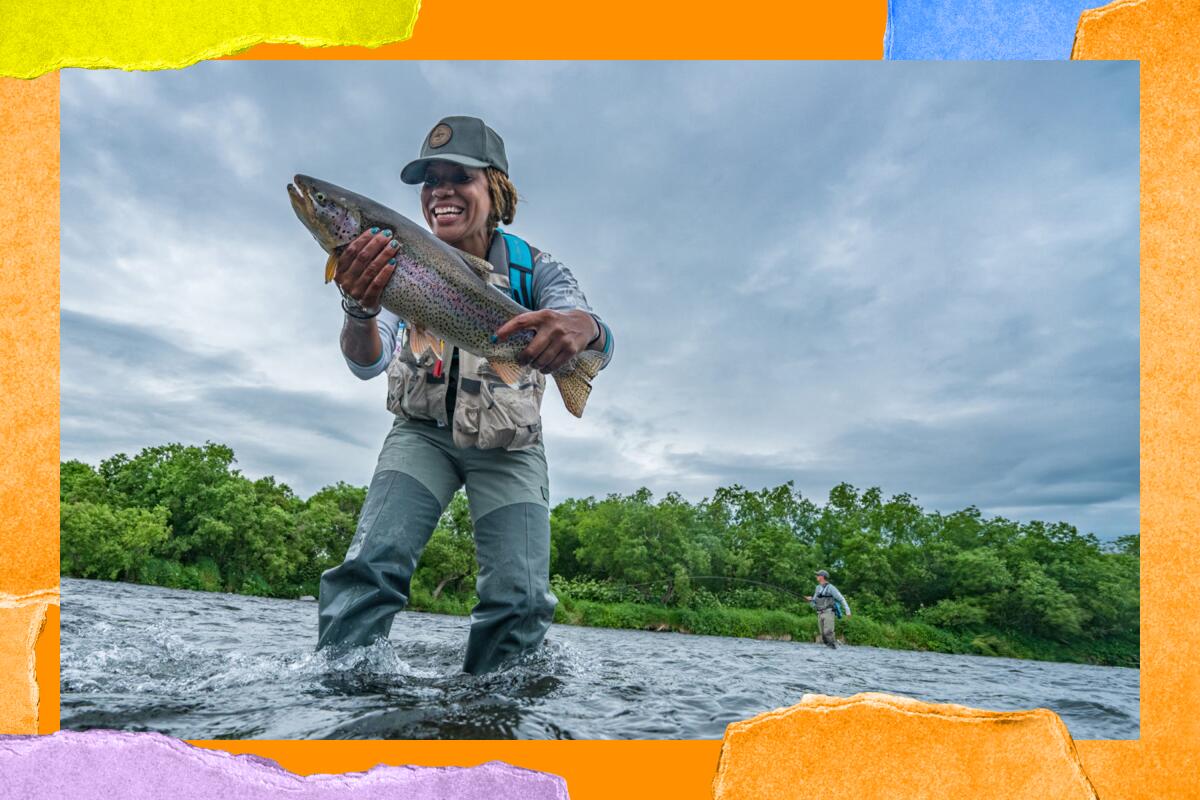
- Share via
Rue Mapp grew up in Oakland but got her first taste of the outdoors on her family’s ranch in Lake County, just north of Santa Rosa, Calif. It was there she learned about wildlife, nature and the seasons and, as she puts it, “how to live in harmony with it all.” Throughout college, she held onto her connection with the natural world, eventually joining Outward Bound on a capstone expedition where she summited peaks in the Sierra Nevada. But she noticed something on that trip: She was the only Black woman in the group.
Get The Wild newsletter.
The essential weekly guide to enjoying the outdoors in Southern California. Insider tips on the best of our beaches, trails, parks, deserts, forests and mountains.
You may occasionally receive promotional content from the Los Angeles Times.
Mapp started sharing her story online and found that her experience resonated with others. While documenting her personal adventures, she wanted to pioneer “a new visual representation of Black people in the outdoors.” So in 2009, Mapp fired up a blogging platform and created Outdoor Afro. By 2020, she was hiking with Oprah.
Now active in 60 cities in the U.S., Outdoor Afro is a national not-for-profit that reconnects Black people with the outdoors through local adventures, leadership training programs and meaningful partnerships.
This week, Mapp’s first book, “Nature Swagger: Stories and Visions of Black Joy in the Outdoors,” hits store shelves. The book features almost 200 pages of photos and stories of Black people enjoying the outdoors — including gardening, horseback riding, fishing, whitewater kayaking, beekeeping and mountaineering.
As Mapp told me, “It was important to illustrate all the ways people are getting outside and connecting to nature as Black people.” It may seem self-evident, but positive representation in media — simply seeing someone who looks like you — can have a huge impact on how you feel about yourself and on the ways other people feel about you.

I chatted with Mapp about her relationship with nature — and how we can strengthen our own.
What does being in nature mean for you?
The awareness of being in nature — no matter where I am — is so much about being present and a connection to both peace and strength. These feelings are as strongly felt no matter what activity I do, whether it’s a dewy morning walk around my neighborhood to camping at the base of the endless Brooks Range in Alaska’s Arctic.
What’s a place that inspires you and why?
The redwood groves in California’s Oakland Hills, because of their historic value that I connect between them and my own life. More than 150 years ago, the region’s redwoods were clear-cut due to the California Gold Rush and its wild demand for wood to build housing for prospectors. There is beauty in witnessing how those redwoods have regenerated. They’ve come back as a second and third generations of their fallen kin, now tall and strong. A testimony of the possibility of regeneration in all our lives, even after experiencing our own versions of being “clear-cut” or faced with otherwise traumatic events. We can come back anew — more strong and powerful than ever. These same redwoods are just a mere 10-minute drive from where most Oaklanders live, so they are quite accessible. They remain a place I often go to remember its lessons, and how they apply to my life and community.
If you could change one thing about the way people think of nature, what would it be?
Nature is not some place “over there,” beginning precisely at the moment you step out of your car and meet a trailhead. Instead, nature is found in the quiet moments: the blue scrub jay flitting from leaf to leaf outside your kitchen window; the water that makes up most of our bodies and responds to the lunar pull; the breath of air filling your lungs that was once rain. Through this kind of awareness, I hope more people can know that nature is everywhere. It is always at hand. We are nature.
What’s your personal can’t-live-without item when you’re outside?
Water, of course. And plenty of it!
What’s your No. 1 tip for people who want to strengthen their relationship with nature?
Find friends, co-workers and family members and simply go outside. You do not have to take a long trek. Perhaps you can take a lunchtime leisurely stroll around the office to deliberately try to find as many wild elements as you can. Or host your next celebration with loved ones at a local park. Initially keeping your activities simple and aligned with your life is key.
4 things to do
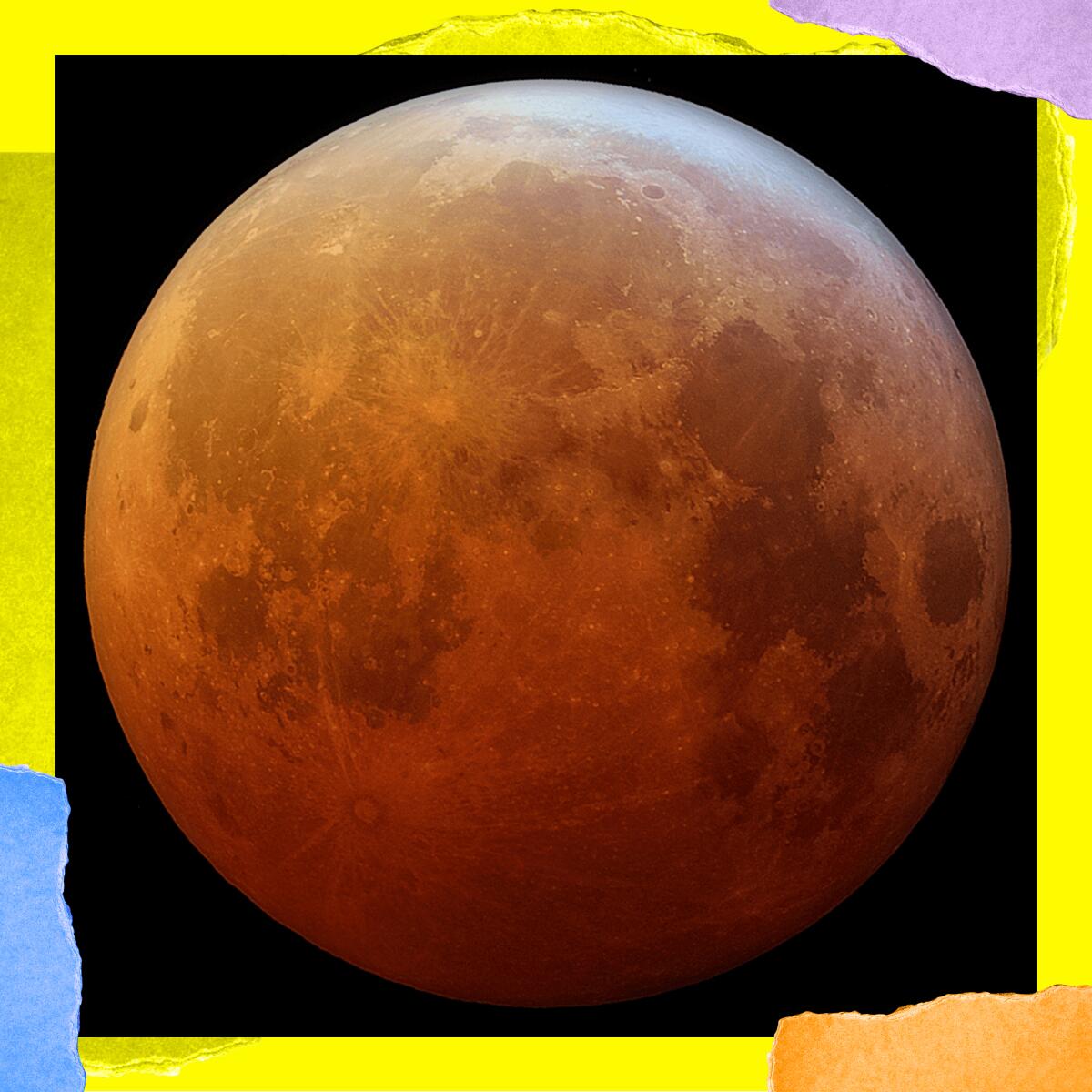
1. Soak in the Blood Moon. Fans of heavenly satellites, rejoice. We are due for another Blood Moon! Although it sounds like something from a vampire flick, a Blood Moon is just another term for a total lunar eclipse due to the reddish hue our closest cosmic companion takes on. You may want to set your alarm for this one: In Los Angeles, the eclipse will begin just after midnight, with the maximum extent just before 3 a.m. You don’t need a telescope to see it — just head outside and look south. For those who don’t want to get out of their pajamas, the Griffith Observatory is hosting a livestream and should also have a time-lapse version up on its YouTube channel by Nov. 9. Note: Neither Griffith Park nor the observatory will be open at this time, so don’t go there.
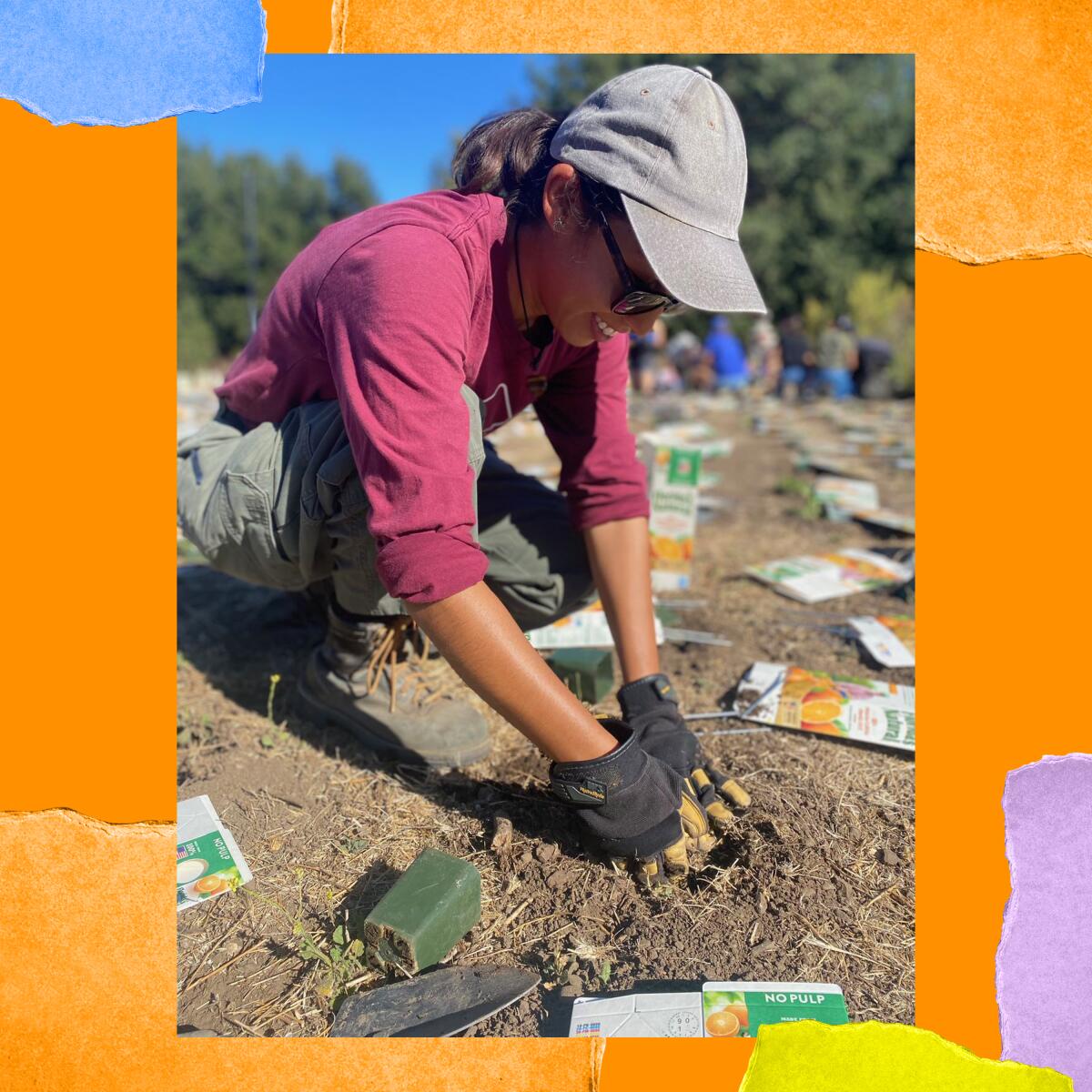
2. Learn how to grow and run a native plant nursery in your own backyard. Whether you’re like me and have wild fantasies about running your own native plant nursery or you simply want to learn how to propagate plants from your garden to give to friends, check out a native plant workshop hosted by the Santa Monica Mountains Fund. On Nov. 10 from 1 to 3:30 p.m., head to the Rancho Sierra Vista Nursery in Thousand Oaks and be sure to sniff all the sagebrush you can get your hands on. Free, reservations required. The timing is great because now is the best time to start planting.
Bonus: Watch this terrific video from San Juan Capistrano’s Tree of Life Nursery on how to correctly plant your new native plant babies.

3. Unite with fellow bike-loving Angelenos at the L.A. Bike Fest. The Los Angeles County Bicycle Coalition is hosting its signature L.A. Bike Fest at the Bike Shed Moto Co. on Saturday from noon to 4 p.m. The fundraiser will feature musical entertainment from KCRW DJ Chris Douridas, Dina Valenz and indie rock band Westerner, as well as drinks and food, a silent auction and awards. The most fitting way to get to the event? By bike, of course. LACBC is leading feeder rides from all over L.A. County. Get info on tickets, or learn how to fundraise or volunteer here.

4. Trek down to Palos Verdes to explore (and help preserve) the peninsula. The Palos Verdes Peninsula Land Conservancy’s monthly 1st Saturday Guided Nature Walk happens on Saturday at 10:30 a.m. Join a trained naturalist on an easy, family-friendly hike through the nature preserve to discover and learn about the plant and animal life that calls this area home. Meet on the back patio of the nature center at the George F. Canyon Nature Center and Preserve. Free, but an RSVP is recommended. Also happening in Palos Verdes that day: Those wishing to get their hands dirty can volunteer to remove invasive plants and replace them with natives. Outdoor Volunteer Day kicks off at 9 a.m. at the Abalone Cove Reserve and ends at noon. Sign up to volunteer here.
Check out “The Times” podcast for essential news and more.
These days, waking up to current events can be, well, daunting. If you’re seeking a more balanced news diet, “The Times” podcast is for you. Gustavo Arellano, along with a diverse set of reporters from the award-winning L.A. Times newsroom, delivers the most interesting stories from the Los Angeles Times every Monday, Wednesday and Friday. Listen and subscribe wherever you get your podcasts.
The must read

One of the things I truly and deeply love about Los Angeles is how it’s like this scrappy underdog in the outdoor world. Once, when I was giving a talk at a documentary screening in Portland, Ore., I mentioned that some of my favorite hiking trails were within L.A.’s city limits, and the audience thought it was a joke. But look, there’s a mountain lion who lives in Griffith Park, one of the largest urban wilderness parks in the country, and the geographic center of the city is inside the world’s largest urban national park. Now we have another feather in our proverbial cap (Dodger blue, natch). The International Union of Geological Sciences just unveiled its first 100 geological heritage sites and exactly one of those sites is in the middle of a city: our very own La Brea Tar Pits. Times writer Corinne Purtill dives into the selection process, highlighting just how unique this designation is among the other recipients.
The red flag

This Sunday kicks off COP27 (that’s the “Conference of Parties” for those who don’t speak International Acronym). This is the 27th annual conference on climate change for the nations that signed onto the original United Nations climate agreement back in 1992. With all due respect to the hard work that has gone into this project … what are we doing here, folks? I first read about climate change back when I was in elementary school (shout-out to P3 Magazine!) and here we are, 27 conferences later, with U.N. Secretary-General António Guterres making remarks such as, “We are headed for a global catastrophe.” Insert gritting-teeth emoji. Author David Wallace-Wells does the heavy lifting of looking on the bright side in an engrossing interactive piece in the New York Times. He highlights the positive steps we have taken to make our future slightly less hellscape-y, as well as the work that remains. You know what they say, 27th time’s the charm.
Cool stuff
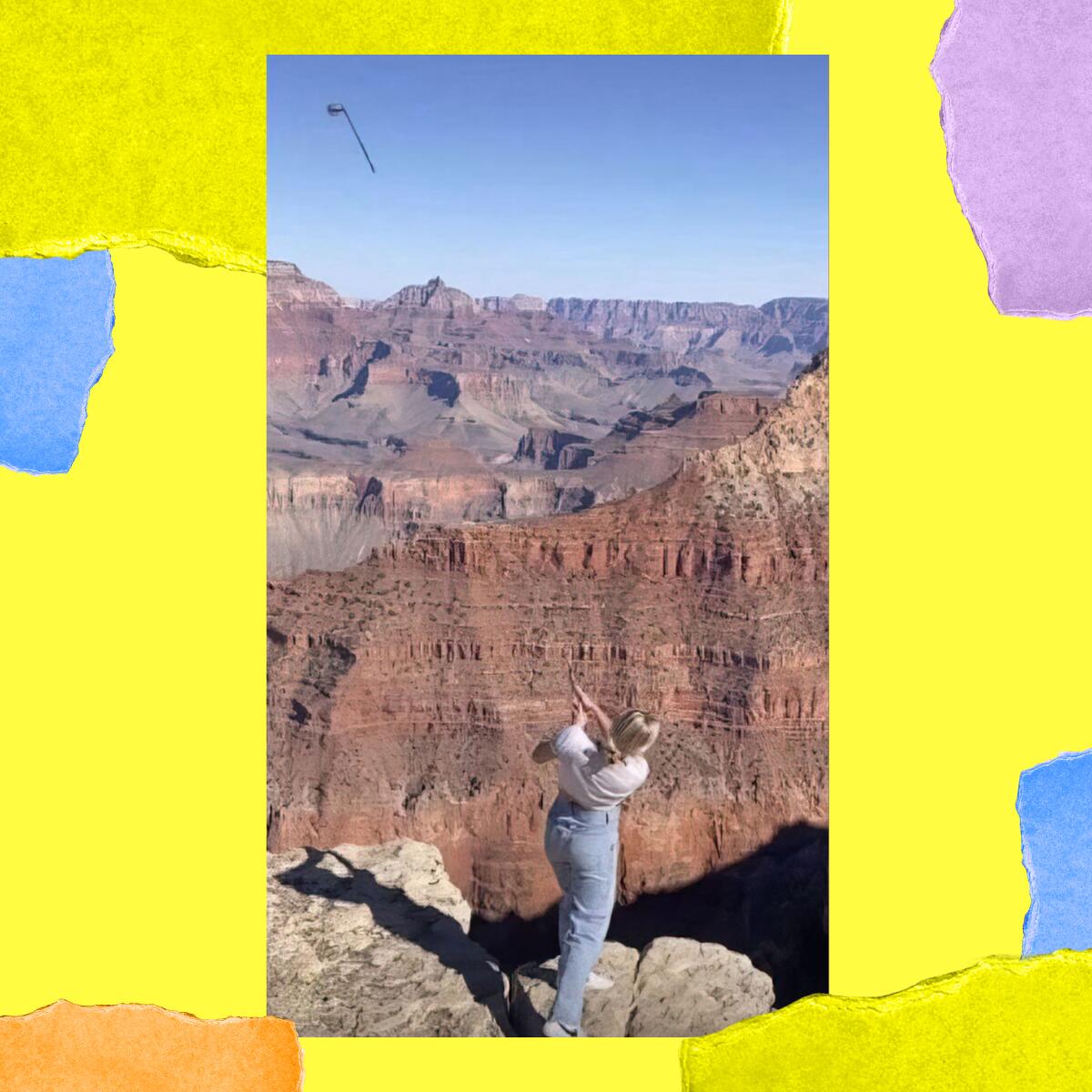
Here’s something that’s decidedly not cool: taking a trip to Grand Canyon National Park and hitting a golf ball off the rim, then following it up by tossing your club over too. That’s what a young woman apparently did recently at Mather Point, just a short walk from the South Rim Visitor Center.
The cool thing about this story? The suspect was caught — and quickly. Because it seems they just had to post it on TikTok. Grand Canyon law enforcement identified and was bringing charges against the person 24 hours later, then posted about it on their own Instagram for some social media irony. In the early days of social media, I was involved with helping the NPS track down Casey Nocket and Mr. Andre, who each vandalized national park sites and later did community service or paid fines. So it’s nice to see the agency continuing to help make sure people are held accountable for their actions. Here’s hoping for many, many hours of in-park service. There’s at least one golf ball down there that needs to be hauled out.
Wild thing
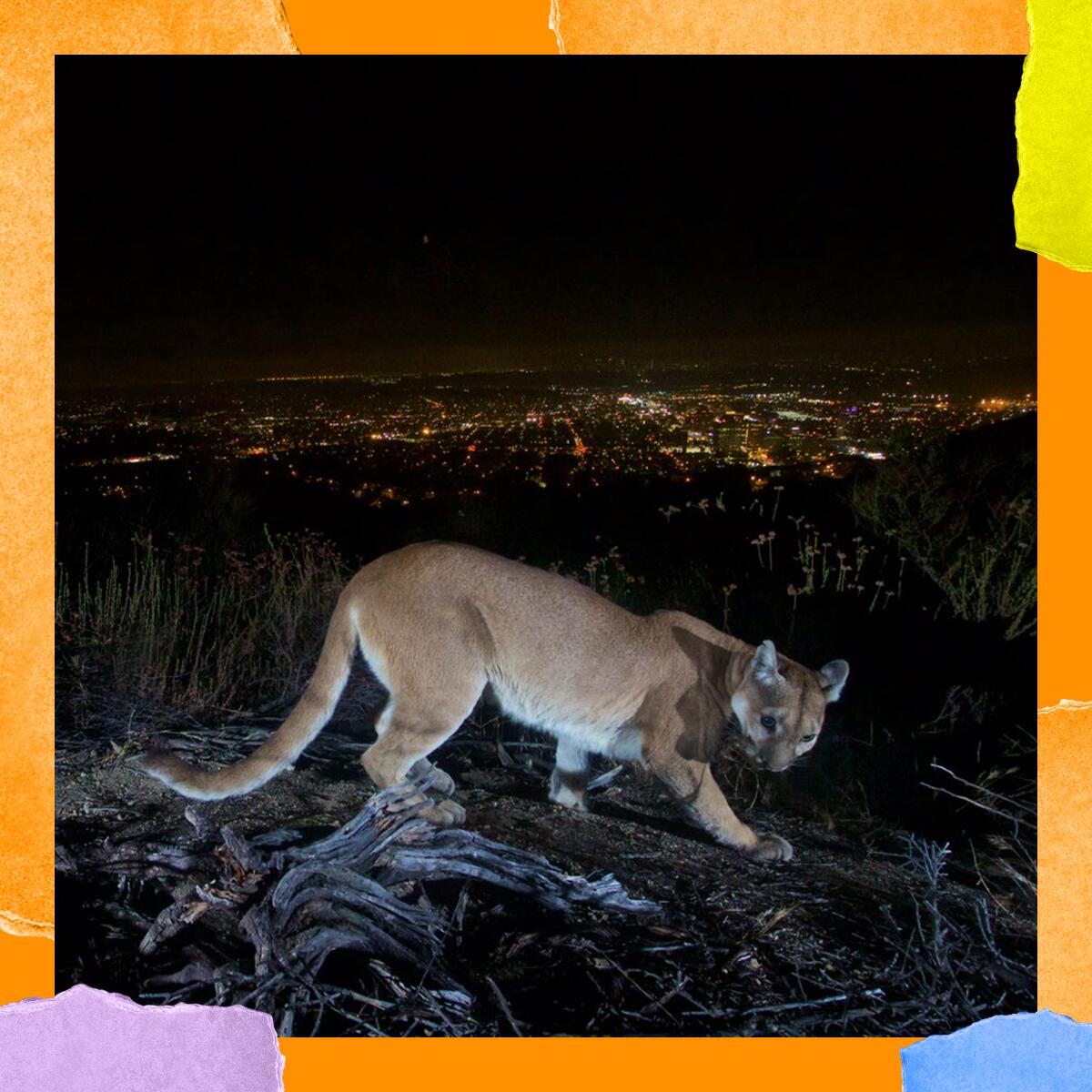
The 2018 Woolsey fire burned 88% of the National Park Service land in the Santa Monica Mountains National Recreation Area, destroying trails, buildings and wildlife along the way. A professor at Cal Poly Pomona wondered how this massive fire affected the region’s mountain lions, and a new research paper published in Current Biology last month had some surprising news. Despite losing their habitat and the vegetation they need to ambush prey, most mountain lions did not encroach further into urban spaces. Unfortunately, staying in the burned landscape did not turn out well for many lions. In High Country News, writer Noah Schlager tells the full story and shines a light on the unsurprising No. 1 killer of our local lions. Spoiler: It’s cars. It’s always cars.
P.S.
Hey, can we talk gear for a minute? Holiday season is fast approaching (perhaps you, too, have noticed the tinsel and festive sweaters on display before Halloween in some stores and died in disbelief). You may already be drooling over the hot new outdoor-whatever, each a fraction of an ounce lighter than the perfectly good item you already have. But before you buy new stuff, I suggest reading Latria Graham’s Afar magazine essay, “The Importance of (Actually) Reusing and Recycling Outdoor Gear.” The truth is, a lot of the gear you own is really built to last, and many companies offer solid repair guides and services when it does start to wear out. Plus, if you stop buying new gear all the time, your partner may stop yelling at you for taking up all the closet space in the apartment. Not that I’m speaking from experience or anything here …
Don’t forget, if you have an outdoor event coming up or know someone doing cool stuff we should know about, let us know about it!
For more insider tips on Southern California’s beaches, trails and parks, check out past editions of The Wild. And to view this newsletter in your browser, click here.
Sign up for The Wild
We’ll help you find the best places to hike, bike and run, as well as the perfect silent spots for meditation and yoga.
You may occasionally receive promotional content from the Los Angeles Times.




